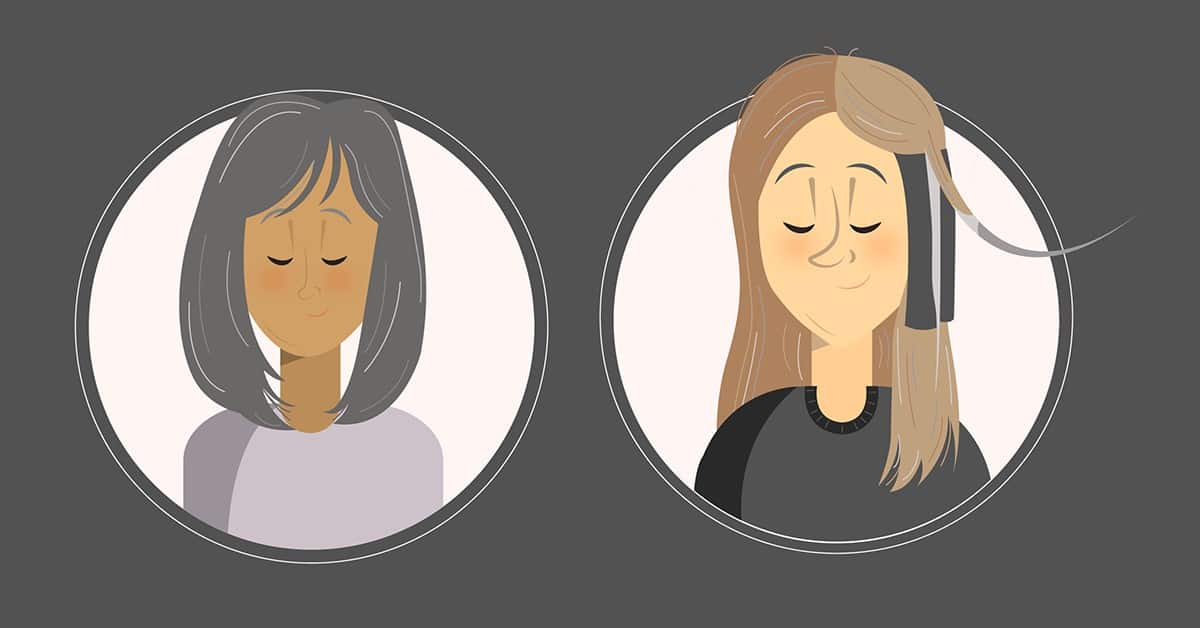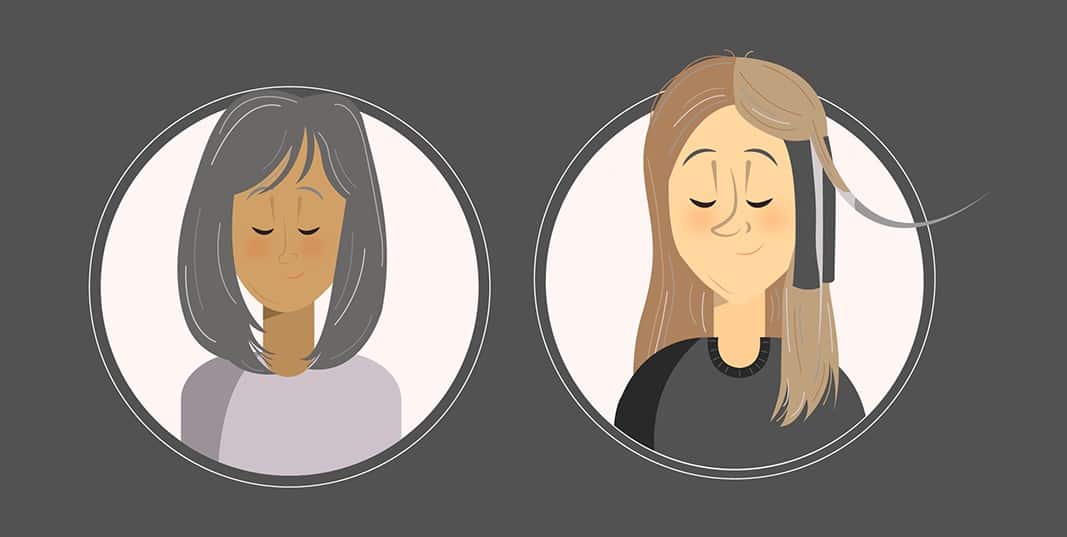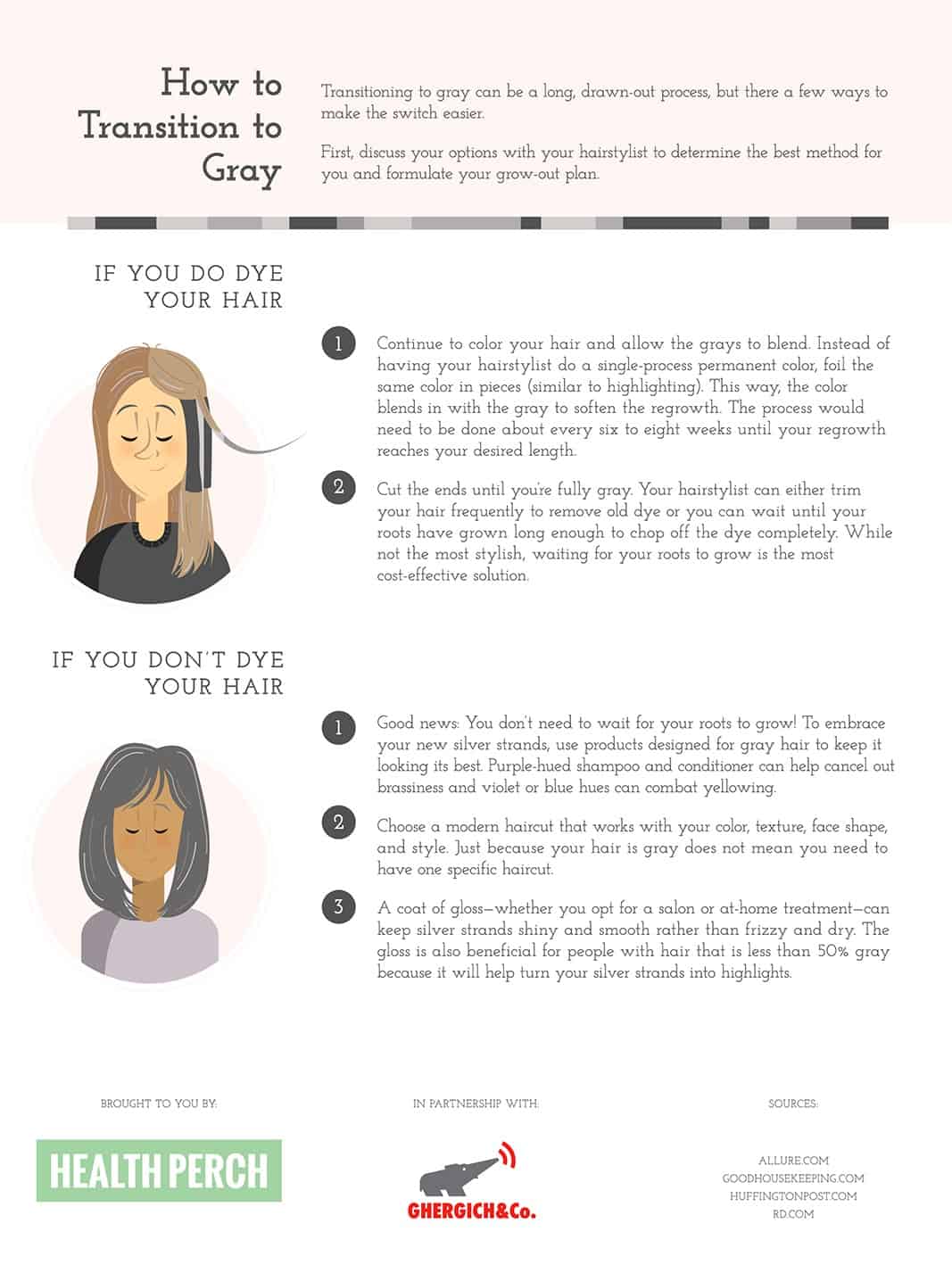Finding your first gray hair can be frightening, especially with society’s pressure to stay young. But gray hair is beautiful and doesn’t signify the end of your prime. Keep reading to learn what causes gray hair, and how to make the transition.
Why Does Hair Turn Gray?
Graying hair is typically a byproduct of the natural aging process, although there are other less common health-related causes. Grays can pop up after the age of 35, but can start earlier or later depending on your DNA. Genetics are even responsible for which hair sections turn gray first and the shade of gray produced.
The process begins when follicles stop producing pigment. There’s no scientific proof that stress can cause graying, but stress can cause your natural hair cycle to speed up and the new growth may be gray. In a natural cycle, a single hair will grow for one to three years before falling out, then a new one grows in its place. Over time, it’s more likely those new hairs will be white or gray as the pigment-producing cells wear down.
Premature graying can be attributed to a few health issues. Thyroid disease can affect metabolism, heart rate, and even hair color. Autoimmune disorders such as vitiligo can attack the cells that produce pigment, resulting in extra grays. Vitamin B12 deficiency has also been linked to premature grays.
Common Gray Hair Myths, Debunked
- Lifestyle affects when you’ll turn gray
True. Smoking and diet can impact how quickly you turn gray. Deficiencies in vitamins such as B12, B9 (folic acid), and B7 (biotin) may be associated with premature graying. - Plucking grays causes more to grow back
While it won’t cause grays, it’s still a bad idea to pluck them as it can weaken the follicle and prevent hair from growing back. - Ethnicity plays a role in the age you will turn gray
True. Caucasians typically go gray before people of Asian and African-American decent. Scientists are still unsure why. - Hair can suddenly turn gray
While your hairline may appear this way, a strand of hair cannot turn gray. It will either grow as your natural color or gray if the pigment is gone. - Gray hair is coarser
It may feel like straw but the structure of the strand hasn’t changed. It tends to be drier due to the follicles producing less oil, resulting in a coarse texture.
How Gray Hair Differs From Pigmented Hair
Hair also changes texture with age as the scalp produces less oil. Moisturizing is key to combat dryness and frizz: Use hydrating and sulfate-free hair products, apply leave-in conditioners, blow-dry with anti-frizz products, or try keratin treatments.
Dying gray hair is also a challenge. Since gray hair is drier, color will have a harder time penetrating the strand and will need to be left on longer, or you will need to opt for products intended for gray hair.
How to Continue Caring for Gray Hair
Gray hair can be stylish if cared for properly. Besides gloss treatments for dryness, you can also add weekly hydrating masks for serious conditioning. Since gray hair has no pigment, it can become yellow and dull over time. To combat yellow, use a clarifying shampoo once a week to remove free radicals (unstable molecules that attack cells and can damage hair) and protect against ultraviolet light and environmental pollutants. Lastly, don’t forget to schedule regular salon visits to keep your cut fresh.


